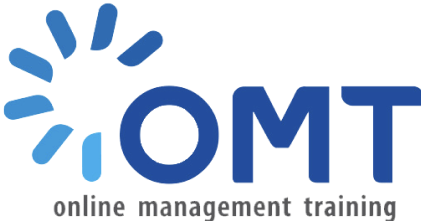



Edtech – Opportunity or Challenge?
30/06/2020

Share the post
The 4th Industrial Revolution is an irreversible trend that impacts all sectors on the global scale.Education is not out of this trend. In recent years, Edtech has been the hot topic of discussion. Edtech is truly a gold mine for startups if they can make full use of it.
1. Number talks, the opportunity from edtech
In the world
According to EdTechXGlobal and IBIS Capital, the school over the world has spent nearly $160 billion on edtech in 2016. The edtech market is forecast to grow at around 17% the US, to reach the size of $252 billion by 2020 (nearly triple the figure in 2013). Therefore, gap for edtech development is huge (only 2% of the market is computerized, with total global education market is estimated at over $5000 billion)
On the other hand, one of the measures that most clearly reflects the level of interest of the market is the number of deals and the total amount of capital invested in startups in edtech. 2017 is forecasted to be a prosperous year for Edtech with an estimated 506 deals, with a total investment of $ 2.904 billion. This figure is approaching the peak in 2015 (522 deals and $ 3.442 billion of investment capital) [CBInsights].

Asia
Edtech’s global potential is unquestionable, Asia is the most potential market for Edtech with impressive growth. There are more than 600 million K-12 students. (By 2020, Asia is expected to account for the largest share of the Edtech market, with more than 17.3%.) Education is receiving much more attention On average, 40% of household income is spent on education.

Southeast Asia
Southeast Asia has always been one of the three hubs in Asia (apart from China and India). With 600 million people, most of them are young citizens, and with high economic growth rate, many countries have billions of smartphone users and high internet penetration, competitive salary. Vietnam is one of the most potential countries in SEA with strong IT workforce and strong connection to Silicon Valley. In fact, with such a young population structure, the resources of teachers, books, and equipment will need to meet that great demand. This is the space for the edtech startup to thrive.
About Vietnam

As a country located in Southeast Asia, Vietnam not only has the advantages mentioned above but also has many other advantages such as competitive human resources, good IT level compared to the region, the number of Vietnamese in Silicon Valley is the bridge to Vietnam. According to a report conducted by Topica Founder Institute in Vietnam, Edtech ranks third among total investment in startup (with $20.2 million investment, just behind 2 other emerging trends which are E-commerce ($34.7 million) and Fintech ($129.1 million).
|
The potential of Vietnam education market: Vietnam now has more than 150 startup businesses that exploit the potential of online education and over 2 million people are participating in many online programs. Vietnam is a country with more than 22 million pupils and students. Each year, Vietnamese spend $3-4 billion VND on studying abroad cost, and online education is a service to meet this broad demand. This is a lucrative market that many corporations, educational companies want to explore. |
2. Challenges looming ahead
According to experts in edtech “Edtech is a new Fintech.” It is still quite early to conclude this statement. In fact, Edtech is one of the toughest markets. Opportunities only come to the startup to take advantage and understand the difficulties.
Market
First of all, we cannot deny that there is a high growth rate of online education in particular (40%) and edtech in Vietnam, however, the need for the teacher in person is still common in Vietnam.
Second, the vibrant edtech market means more startups entering the market and competing at all costs. Startups need to be outstanding and address practical needs of the user. “Copy cat” startup will get out. Edtech startup faces with many stakeholders in the product offering process: the school board in the negotiation process and the product purchase, the beneficiary – student product, teacher. The customer is the parent. Every factor is able to influence the sales process mentioned above. Startups need to understand the behavior, the role each factor as well as the ecosystem around its products. Most importantly, zero in where the end user is, who decides to buy the product/service. For example, startups sell products to schools, it is important to understand that school administrators have a decision to buy, and end users are students and teachers. Startup should have mentors as teachers in the group to have a skin in the game.
Revenue & Profit problem
It is quite hard for Edtech startup to get. Startup in education is often a long-term matter. You have to be prepared for many years. The hyper growth concept does not seem to exist in this industry. You need at least 5 years to see the product- market fit. With VC, normally it is quite a pressure to get pay off as early as possible. Therefore, it is quite a long time for VC to get pay off in edtech.
Normally, having a large user base does not mean that you can monetize from these users. A startup that survives is not measured by the number of users but the number of users paying for that product. Take Khan Academy & Duolingo as examples, both startups are still looking for a sustainable revenue model. Edtech is very fierce because only the startup really breakthrough can find the appropriate revenue model. Startups will face a major competition, leading to competition in price in both B2B and B2C models. In particular, the sale of products to schools, especially public schools in the world (of course in Vietnam) is quite difficult when the schools are quite tight on budget. Therefore, it is vital to persuade the board and choose the right time to pitch.

Education is a respectful profession, ones who work in this industry is also be respected. Vietnam is aiming to be one of the pioneers of the 4th revolution in the industrial revolution. Therefore, the role of “virtual teacher” – online education, edtech are increasingly important. Edtech’s trends in the world will be explored more in part two, “Edtech Trends in the 4.0 era“
Le Hoang
Nguồn: https://techinsight.com.vn/language/en/edtech-opportunity-challenge/








